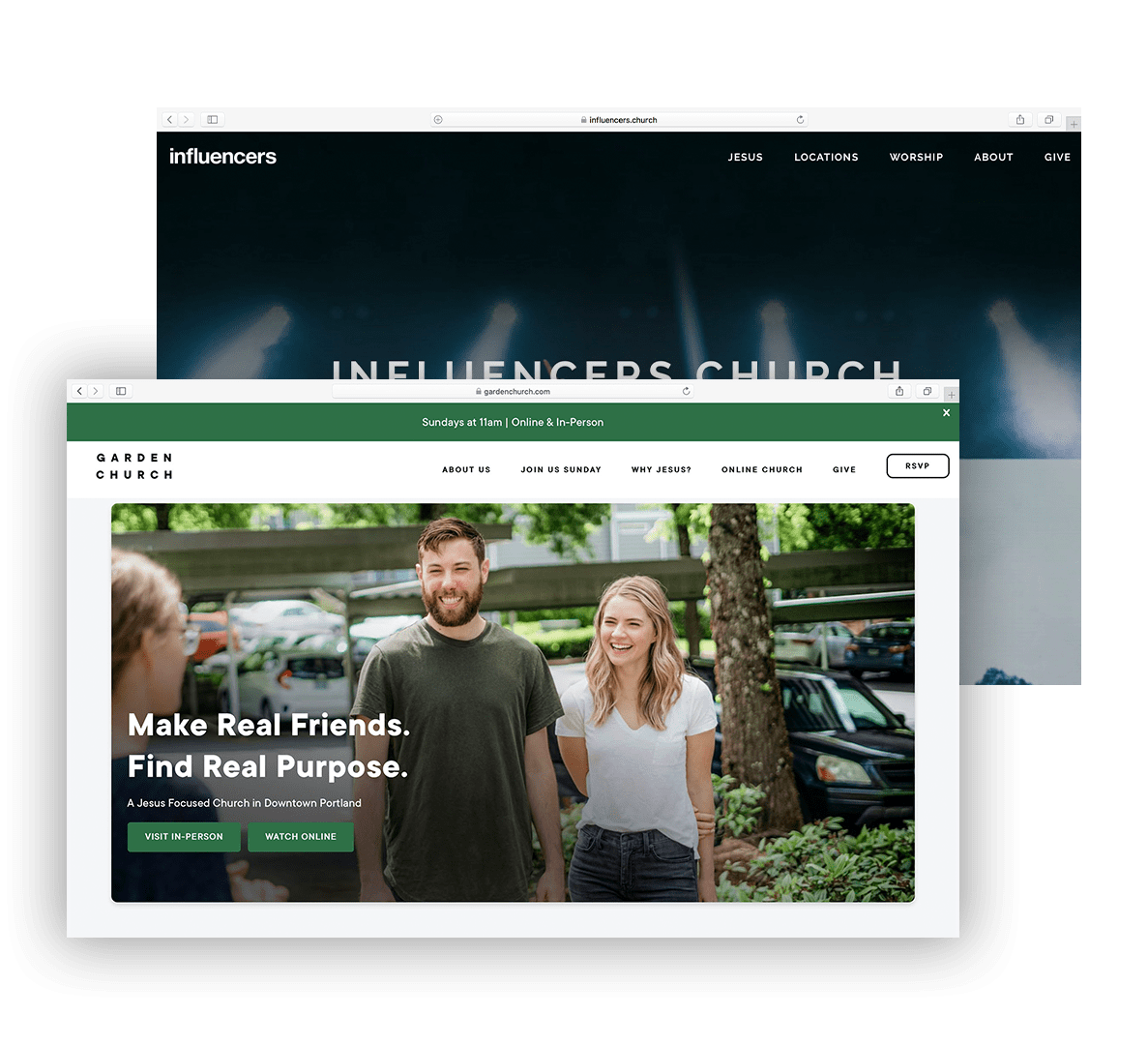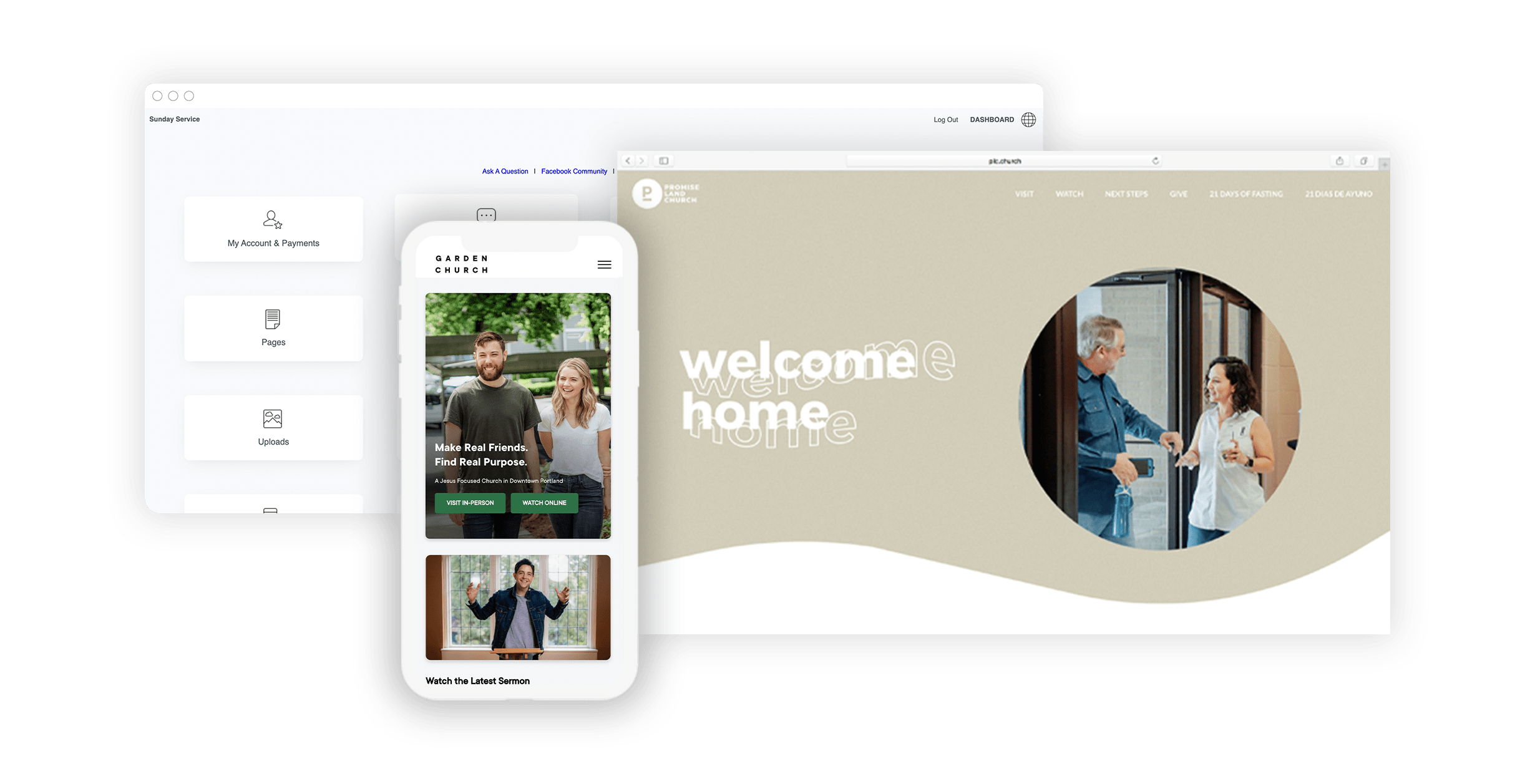A well-designed Church website, carefully crafted with thoughtful consideration, can effectively convey the Church’s overarching mission, core values, and vibrant array of activities to the existing community and potential newcomers.

By seamlessly blending visual elements, engaging content, and user-friendly navigation, such a website becomes a powerful tool for fostering a welcoming and inclusive online environment, transcending physical boundaries, and extending its reach to individuals from all walks of life. The website becomes a digital sanctuary through its intuitive design and strategic placement of relevant information, inviting visitors to explore the Church’s beliefs, initiatives, and outreach programs. It serves as a virtual gateway, allowing individuals to connect with the Church’s vibrant community effortlessly, find solace in its teachings, and actively participate in its uplifting activities, irrespective of their geographical location or personal circumstances.
With its inclusive design principles, the Church website becomes a testament to the Church’s commitment to embracing diversity and creating a space where individuals from various backgrounds, cultures, and identities can come together, share their stories, and experience a sense of belonging. In this online realm, the Church’s website serves as a beacon of hope, extending warmth and hospitality to all who seek spiritual nourishment, guidance, and a place to call home. Here are seven elements of an effective Church website design:
Informative Content
An effective Church website goes beyond mere aesthetics and incorporates informative and engaging content meticulously curated to reflect the Church’s profound mission and dynamic activities. With utmost precision, the website becomes a digital hub where visitors can access comprehensive information, enlightening them about the core beliefs and values that guide the Church’s spiritual journey.
Through carefully crafted prose and an eloquent writing style, the content on the website acts as a conduit, effortlessly conveying the essence of the Church’s teachings, principles, and philosophies to both the curious seeker and the devoted congregant. Each word and sentence is thoughtfully chosen, ensuring the information is clear, concise, and easily understandable, regardless of the reader’s familiarity with religious terminology.
To enhance the user experience and facilitate quick navigation, the website showcases a well-organized structure embellished with clear headings and subheadings that serve as signposts along the visitor’s virtual exploration. This logical and intuitive arrangement allows individuals to effortlessly locate the information they seek, promoting a seamless flow of knowledge and a deeper understanding of the Church’s multifaceted offerings.
Beyond providing insights into the Church’s foundational beliefs, the website is a comprehensive repository of knowledge regarding the diverse programs, transformative events, and services that grace the Church’s calendar. Whether it’s detailing the vibrant worship services, educational classes, charitable initiatives, or uplifting community gatherings, the content on the website becomes a vibrant tapestry, weaving together the threads of the Church’s rich tapestry of activities and commitments.
Moreover, the content is visually appealing, incorporating multimedia elements such as images, videos, and interactive features that enrich the visitor’s virtual experience. These visual aids serve as windows into the life of the Church, capturing the heartfelt moments of fellowship, the joyous celebrations, and the impactful community outreach endeavors.
Mobile-responsive design
With the exponential rise in the number of individuals accessing the internet through their mobile devices, the significance of ensuring that Church websites are mobile-responsive cannot be overstated in this rapidly evolving digital landscape, where smartphones and tablets have become integral parts of our daily lives, adapting the website’s design and functionality to cater to diverse screen sizes and resolutions is of paramount importance.

A mobile-responsive Church website embraces the principles of adaptability and accessibility, seamlessly accommodating mobile screens’ varying dimensions and orientations without compromising the user experience. Through a fluid and flexible layout, the website intuitively adjusts its elements, ensuring the content remains easily readable, images are appropriately sized, and interactive features remain fully functional, regardless of the device used.
The mobile-responsive design of the Church website harmonizes with the unique characteristics of mobile devices, offering visitors an optimized and visually appealing experience that captures the essence of the website’s purpose. By employing responsive design techniques, such as fluid grids, scalable images, and responsive navigation menus, the website effortlessly transcends the limitations imposed by different screen sizes, embracing the potential of every mobile device as a portal to connect with the Church’s digital presence.
The mobile-responsive nature of the Church website enhances the user experience and demonstrates the Church’s commitment to inclusivity and accessibility. It ensures that individuals who primarily rely on their mobile devices for internet access, such as those with limited access to desktop computers or those constantly on the move, can seamlessly engage with the Church’s online platform, irrespective of their location or circumstances.
Furthermore, a mobile-responsive Church website is a testament to the Church’s forward-thinking approach, acknowledging and adapting to the ever-changing technological landscape. It signifies the Church’s willingness to embrace modernity, leveraging the power of mobile connectivity to expand its reach, spread its message, and foster meaningful connections with individuals from all corners of the world.
Clear call-to-action
A clear and compelling call to action lies at the heart of an effective Church website, serving as a guiding beacon that empowers visitors to take meaningful steps toward deeper engagement and active participation. The website catalyzes transformative action, providing a seamless and user-friendly experience that invites individuals to join the congregation, contribute their talents through volunteering, or make a difference through generous donations.

To ensure maximum impact, the call-to-action is strategically positioned as a prominent and visually striking element on the homepage, instantly capturing visitors’ attention and arousing curiosity. It serves as a virtual doorway, inviting them to embark on a transformative journey and become integral to the Church community.
The call-to-action extends beyond the confines of the homepage, resonating throughout the website with consistent prominence. It is thoughtfully interwoven into the fabric of the website’s design through visually compelling banners, intuitive navigation buttons, or strategically placed links that lead visitors toward the desired actions.

The language used in the call to action is deliberate, evoking a sense of urgency, inspiration, and purpose. The text is concise yet impactful, conveying the essence of the invitation and compelling individuals to take immediate steps toward getting involved. It strikes a delicate balance between being persuasive and respectful, encouraging visitors to explore how they can contribute to the Church’s mission without imposing any sense of obligation.
Moreover, the call-to-action is supported by clear and concise instructions, ensuring that visitors understand the process and know precisely how to take the desired action. Whether it involves filling out a membership form, signing up for volunteer opportunities, or donating, the steps are clearly outlined and accompanied by user-friendly interfaces that simplify the process and minimize potential barriers.
By strategically placing the call-to-action throughout the website, it remains a constant presence, gently nudging visitors towards active engagement with the Church’s mission and activities. Its persistence serves as a reminder of the transformative power within each individual and the boundless potential to impact the Church community and beyond positively.
Up-to-date content
An effective Church website understands the importance of up-to-date content, ensuring it remains a vibrant reflection of the Church’s ever-evolving activities and events. Through regular updates and timely additions, the website becomes a dynamic platform that connects the congregation and the wider community, keeping them informed, engaged, and inspired.
- Multimedia content: Elevating the website’s impact, an effective Church website seamlessly incorporates multimedia content, including captivating videos, enriching podcasts, and visually compelling photos. By embracing the power of multimedia, the website transcends text boundaries and immerses visitors in an engaging and multi-sensory digital experience. Sermon recordings allow individuals to revisit or discover profound teachings, while videos and photos from recent events and activities bring the vibrant spirit of the Church to life. Clear descriptions and titles accompany multimedia content, ensuring easy access and enhancing the user’s understanding and appreciation of each piece.
- Accessibility: An effective Church website aspires to be accessible to all, embracing the principle that everyone, regardless of their abilities, should be able to engage with the Church’s digital presence. With inclusivity in mind, the website is thoughtfully designed, incorporating features that prioritize accessibility. Alt text descriptions accompany images, making them accessible to individuals using screen readers. The text is presented clearly and concisely, facilitating comprehension for all visitors. Moreover, the navigation is user-friendly, intuitively guiding individuals through the website and enabling seamless exploration, regardless of technological proficiency.
- Contact information: Recognizing the importance of fostering meaningful connections, an effective Church website ensures that contact information is readily accessible. Visitors can effortlessly locate essential details such as the Church’s address, phone number, and email address, enabling them to reach out and connect. Information on contacting the Church’s staff and leaders is prominently displayed, providing avenues for individuals to seek guidance, ask questions, or express their interest in becoming more involved.
An effective Church website design can help create a welcoming and inclusive online space for the congregation and the wider community. By incorporating elements such as informative content, mobile-responsive design, clear call-to-action, up-to-date content, a straightforward overview on the homepage, accessibility, and contact information, Churches can create a website that reflects their mission and values and engages visitors in a meaningful way.



